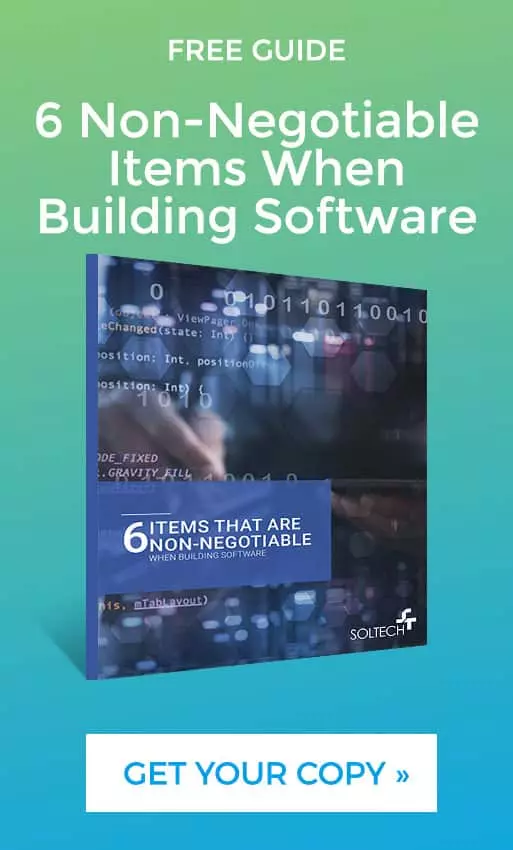
How Do I Keep My Software Current After It Is Built
By SOLTECH
One of the benefits of custom software is that that it can be modified over time to keep up with your business changes and new technologies.
The first step in keeping your software current is to have a software support team or available resources that will handle not only issues but also feature enhancements.
Software Support Requirements
Much like when you first developed the software, the new features and changes to existing functionality should go through a requirements process. Requirements are a structured way to gain clarity and to consistently share what it is you want to build, as well as the benefit for you and your users.
Analyzing The Impacts
With the requirements explicitly captured and understood, developers will look at your existing code and decide how best to apply the changes. Unlike writing a product from scratch, your software team will pay close attention to how introducing new code may impact your existing software and existing users.
Are you adding or changing fields? If so, will the current users need to provide this information or will the system default the values initially?
Are you modifying an existing process? What is the impact to your current users, especially anyone partially through the process, and how will you inform them of the change?
Are you adding a new feature? How does it work with existing features? Does it share any data with other processes? Who will be able to access it? Are any existing reports impacted by the change?
The Benefit of Good Software Architecture
Once the functional implications are understood, it’s now a question of making the changes. For a well-designed and architected system, change is not an issue. When software is built to last, it is created in an organized way that is easy to understand, that supports reuse and something called separation of concerns.
Separation of concerns means that your code has clear boundaries and doesn’t become like the inside of a messy closet, allowing you to add new functionality or modify existing functionality without concern of breaking your application.
Software Testing
After the software modifications are made, then the system needs to be tested. Beyond testing that the new functionality works, your entire application should be reviewed to see if there are any unexpected impacts. This is known as end-to-end testing.
It’s better to find issues now than to have your users find them for you. Your software partner should have a well staffed Quality Control team to assist in testing, but feel free to get in there and test yourself.
Code Control
Code management or code control is always important. Your software partner most likely has a code repository of your software with all the changes ever made since the beginning of the project.
Once your application is live, code control is even more critical for software support. While you are developing your next release, your current version still needs to be supported. If a critical bug comes up, you need to be able to “patch” the production version of your code without shipping new, unfinished code in the process.
Keeping Your Software Current
If your application was built on a solid foundation and you have a seasoned support team behind you, changing your custom software application is nothing to be scared of.
There are risks with making changes, but most can be managed through requirements, impact analysis, code control, and testing.
If you would like to make a change to your application but don’t know about its architecture or if you need to find a support team, then let us know. SOLTECH supports a wide variety of web, mobile and enterprise applications regardless if we originally wrote them or not.
We want to help every software project begin on solid ground. In The 5 Pillars Of A Successful Software Project we share the five essential ingredients of every software project.
You can grab a copy of the guide below and share it with your team!






